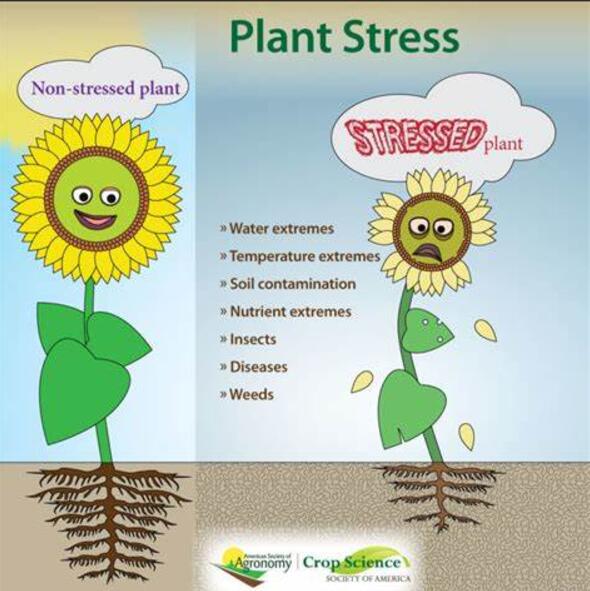Enhancing saline-alkali tolerance in cucumber seedlings: The role of exogenous melatonin in redox homeostasis and stomatal function
IF 6.8
Q1 PLANT SCIENCES
引用次数: 0
Abstract
Cucumbers, cultivated globally on 3.7 million hectares, face yield losses due to salinity, highlighting the need for effective mitigation strategies for degraded soils. Melatonin (MT) has gained significant interest for its ability to relieve plant stress. To explore the regulatory role of exogenous MT in maintaining redox homeostasis in cucumber seedlings under saline-alkali stress (SA), this study employed the cucumber cultivar 'Xinchun No. 4′. Simulated saline-alkali conditions were applied, and the effects of exogenous MT on seedling growth, reactive oxygen species (ROS) production, the ascorbate-glutathione (AsA-GSH) cycle, and changes in leaf anatomy were systematically assessed. The findings reveal that exposure to 40 mmol·L-1 saline-alkali stress significantly impaired cucumber seedling growth, reduced biomass, and led to excessive accumulation of hydrogen peroxide (H2O2) and superoxide anions (O2·⁻) in the leaves. This, resulted in increased lipid peroxidation (indicated by elevated malondialdehyde (MDA) levels), whichi further compromised the cell membrane. Application of 10 μmol·L-1 MT effectively reduced ROS levels, lowered MDA content, and mitigated electrolyte leakage. MT also enhanced AsA and GSH levels, improved AsA/DHA and GSH/GSSG ratios, and upregulated key AsA-GSH cycle genes (CsAPX, CsAAO, CsMDAR, CsDHAR, CsGR), leading to a significant increase in enzymatic activity. In addition, MT alleviated stress-induced stomatal closure, thereby restoring normal stomatal function. These findings suggest that MT enhances saline-alkali tolerance by mitigating oxidative damage, promoting antioxidant defenses, and effectively preserving stomatal function. Thus, our study points to a sustainable strategy to improve crop resilience in salinized environments via MT application.
求助全文
约1分钟内获得全文
求助全文
来源期刊

Plant Stress
PLANT SCIENCES-
CiteScore
5.20
自引率
8.00%
发文量
76
审稿时长
63 days
期刊介绍:
The journal Plant Stress deals with plant (or other photoautotrophs, such as algae, cyanobacteria and lichens) responses to abiotic and biotic stress factors that can result in limited growth and productivity. Such responses can be analyzed and described at a physiological, biochemical and molecular level. Experimental approaches/technologies aiming to improve growth and productivity with a potential for downstream validation under stress conditions will also be considered. Both fundamental and applied research manuscripts are welcome, provided that clear mechanistic hypotheses are made and descriptive approaches are avoided. In addition, high-quality review articles will also be considered, provided they follow a critical approach and stimulate thought for future research avenues.
Plant Stress welcomes high-quality manuscripts related (but not limited) to interactions between plants and:
Lack of water (drought) and excess (flooding),
Salinity stress,
Elevated temperature and/or low temperature (chilling and freezing),
Hypoxia and/or anoxia,
Mineral nutrient excess and/or deficiency,
Heavy metals and/or metalloids,
Plant priming (chemical, biological, physiological, nanomaterial, biostimulant) approaches for improved stress protection,
Viral, phytoplasma, bacterial and fungal plant-pathogen interactions.
The journal welcomes basic and applied research articles, as well as review articles and short communications. All submitted manuscripts will be subject to a thorough peer-reviewing process.
 求助内容:
求助内容: 应助结果提醒方式:
应助结果提醒方式:


